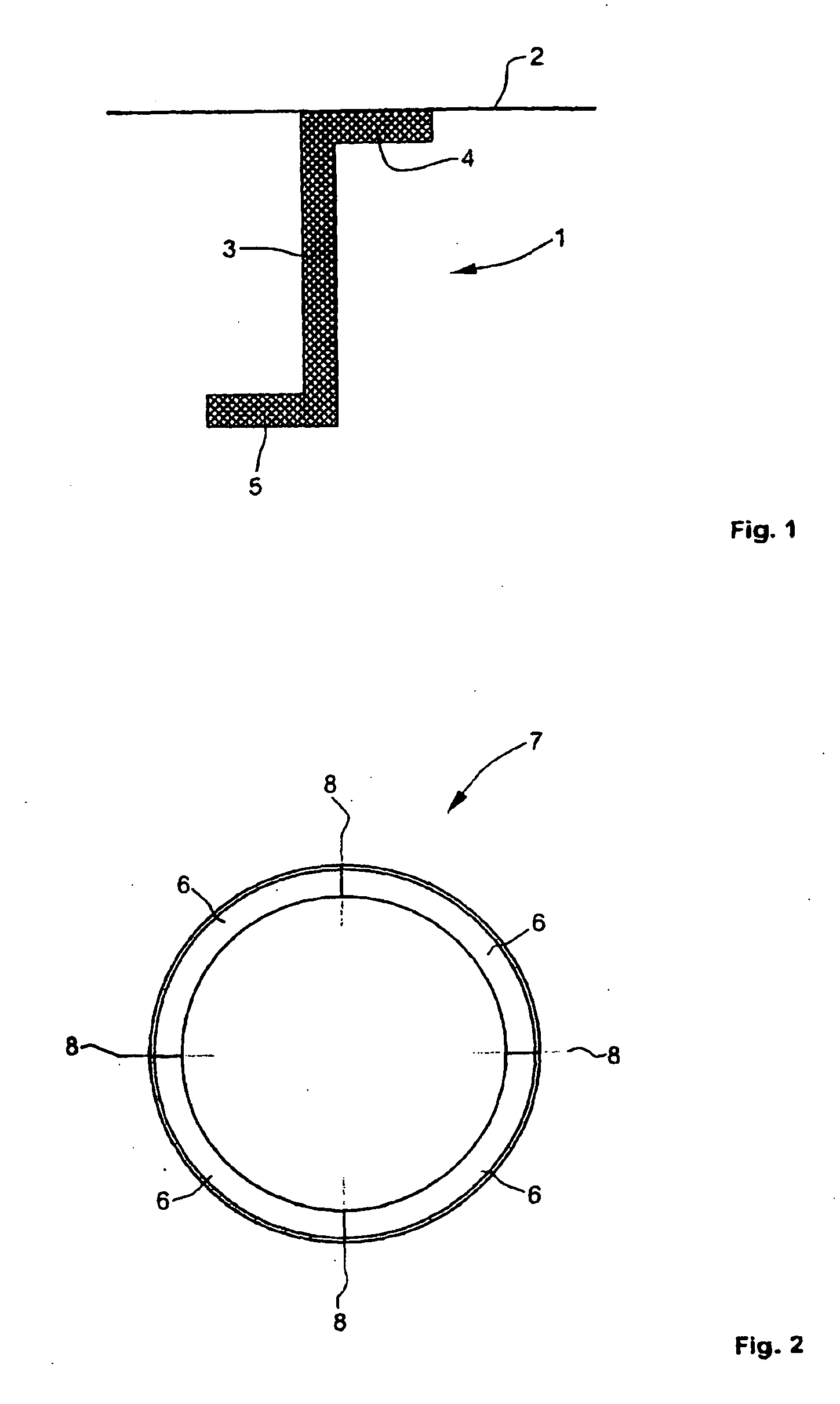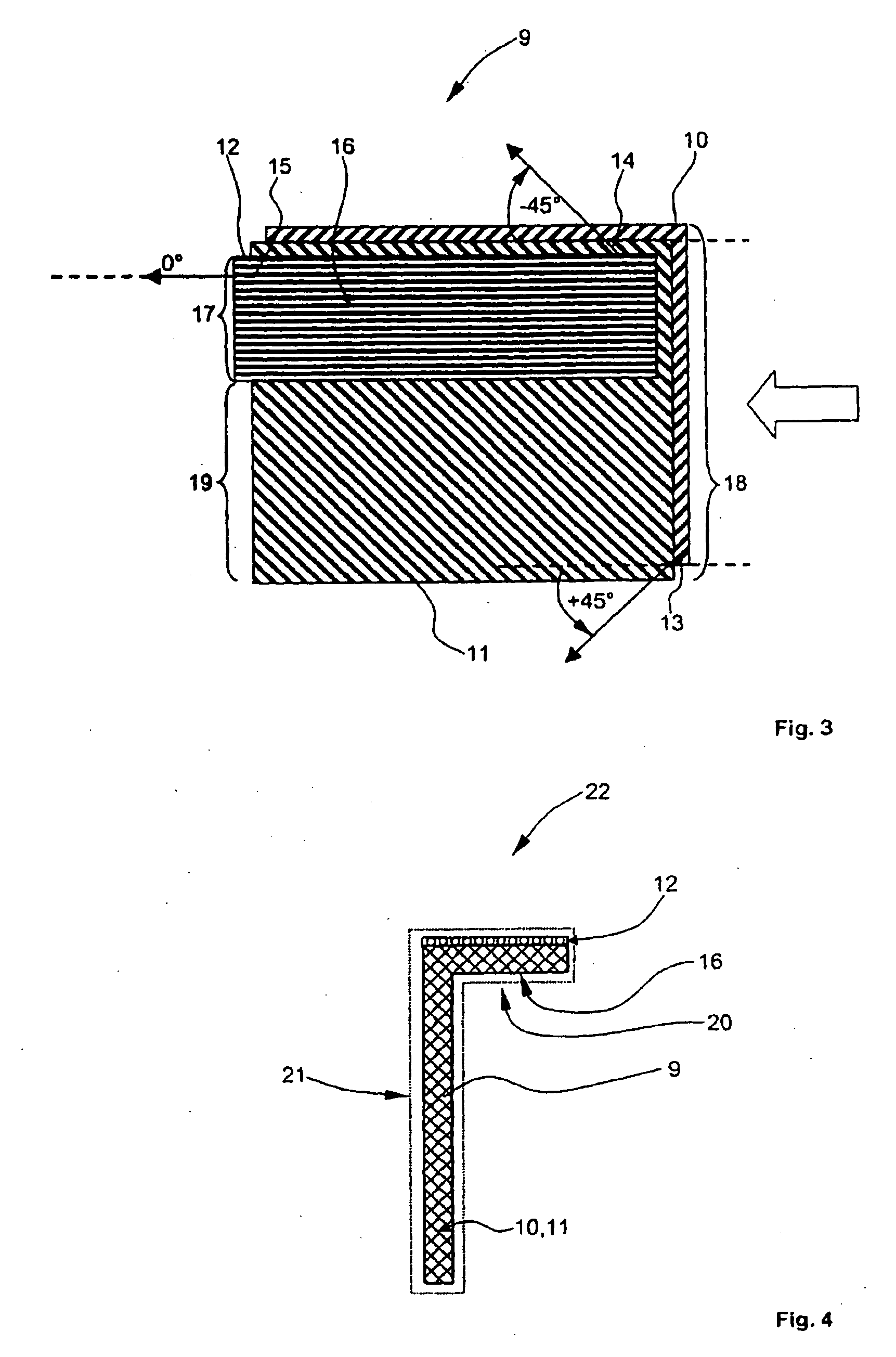Reinforcement beam as well as method and fiber laminate for manufacturing the reinforcement beam
a technology of reinforcement beams and fiber laminates, applied in the field of reinforcement beams, can solve the problems of inability to manufacture large components such as ring frames or the like in this manner, disadvantage of a relatively large number of seams, and thickening portions in the overlap region, so as to achieve “optimum mechanical properties” and reduce the effect of weight and small radius of curvatur
- Summary
- Abstract
- Description
- Claims
- Application Information
AI Technical Summary
Benefits of technology
Problems solved by technology
Method used
Image
Examples
Embodiment Construction
[0037]The following is an explanation of an inventive reinforcement beam, a fiber laminate used for manufacturing the same, and a method for manufacturing the reinforcement beam.
[0038]FIG. 1 is a cross-sectional view of a reinforcement beam with a Z-shaped cross section, which is used for example as a ring frame for the reinforcement of fuselage cells in aircraft.
[0039]In the embodiment shown in FIG. 1, a reinforcement beam 1 has a substantially Z-shaped cross section. The reinforcement beam 1 serves in particular to reinforce a fuselage cell (not shown in the drawings) of an aircraft and is connected with a paneling or planking 2 for this purpose. In flight, particularly shear and / or transverse forces act on a base portion 3. In an outer portion 4, the reinforcement beam 1 is mainly subjected to tensile stress, whereas in an outer portion 5 mainly compression stress arises. Moreover, the reinforcement beam 1 is also subjected to bending moments. The reinforcement beam 1 is made by ...
PUM
| Property | Measurement | Unit |
|---|---|---|
| angle | aaaaa | aaaaa |
| angle | aaaaa | aaaaa |
| angles | aaaaa | aaaaa |
Abstract
Description
Claims
Application Information
 Login to View More
Login to View More - R&D
- Intellectual Property
- Life Sciences
- Materials
- Tech Scout
- Unparalleled Data Quality
- Higher Quality Content
- 60% Fewer Hallucinations
Browse by: Latest US Patents, China's latest patents, Technical Efficacy Thesaurus, Application Domain, Technology Topic, Popular Technical Reports.
© 2025 PatSnap. All rights reserved.Legal|Privacy policy|Modern Slavery Act Transparency Statement|Sitemap|About US| Contact US: help@patsnap.com



